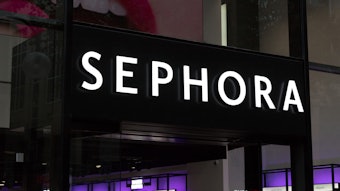More cullings from Kline & Company’s recently released Cosmetics & Toiletries USA report shows the upcoming up-and-down path in beauty retailing’s future. According to the market researcher’s blog post “Fasten Your Seatbelts for the Beauty Retailing Roller Coaster,” beauty retailing is swiftly changing, and brands are working hard to try to keep up.
The post notes that the company’s Cosmetics & Toiletries USA report shows that “department stores, along with specialty stores, experienced exceptional growth in 2013, while direct sales outlets or channel squeaked by with an estimated growth of 1%.”
Additionally, Kline & Company’s biennial Beauty Retailing USA report, which the company is set to release in 2015, “digs deeper into the retail landscape, explaining what growth patterns really mean within the channels of distribution.”
Additionally, the blog shares, “This report will explain that there is more in channel growth than meets the eye, with many different elements to each channel. For example, if we break up the direct sales channel into its various components, we would see that the person-to-person selling portion experienced dramatic declines due to Avon’s poor performance, while the smaller e-commerce, home shopping, and infomercial channels recorded healthy gains. E-commerce remains the fastest growing segment of the beauty retailing industry, with retailers and marketers continuing to compete with their own transaction websites for a growing share of beauty dollars. The opportunity to purchase online via smartphones assures continuous growth and development of this channel.”
Kline also points out, “In addition to the e-commerce channel, the fact that retailers continue to expand and diversify distribution options and are present in practically all retail channels in order to capture consumers’ shopping preferences is equally notable. Brands that were once strictly infomercial, such as Guthy-Renker’s Wen hair care and Meaningful Beauty, are now both found in beauty specialty stores, such as Sephora and Ulta, respectively.”
And Kline concludes, “An improved economy resulted in strong growth in the department store and specialty store channels. Part of this growth is due to consumers investing in products under the anti-aging umbrella, such as more high-tech and innovative facial treatments commonly found in higher-end retailers. The growing use of multiple treatment products such as serums in addition to moisturizers and anti-aging agents, lead to incremental sales, which helped propel growth, especially in the facial treatments area. With the use of so many multiple products, beauty regimens demands the use of a trained beauty advisor, which resulted in department stores and specialty stores growing at a faster percentage than the industry average.”










